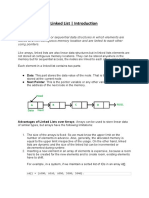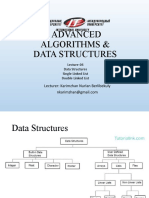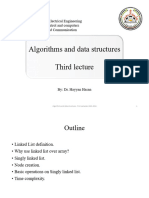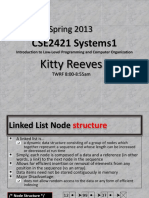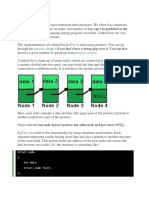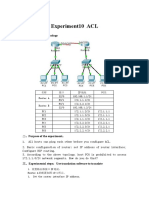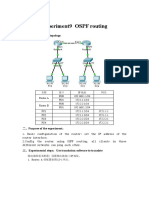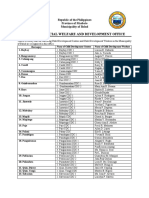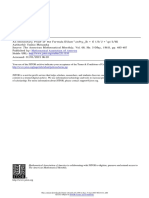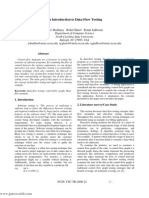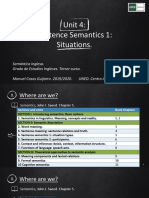0% found this document useful (0 votes)
65 views8 pagesMahedi 3.1 3.2
The document contains information about Mahedi Hassan, a computer science student with ID 20183290535 studying data structures under Teacher Yi. It discusses the concepts of nodes and linked lists in coding. Specifically, it defines a node as having a data and next pointer field, and defines a linked list as nodes connected together via their next pointers, with the first node being the head. It then provides sample C code to declare a linked list struct containing these fields and code to insert nodes into a linked list via the head.
Uploaded by
Mahedi HassanCopyright
© © All Rights Reserved
We take content rights seriously. If you suspect this is your content, claim it here.
Available Formats
Download as DOCX, PDF, TXT or read online on Scribd
0% found this document useful (0 votes)
65 views8 pagesMahedi 3.1 3.2
The document contains information about Mahedi Hassan, a computer science student with ID 20183290535 studying data structures under Teacher Yi. It discusses the concepts of nodes and linked lists in coding. Specifically, it defines a node as having a data and next pointer field, and defines a linked list as nodes connected together via their next pointers, with the first node being the head. It then provides sample C code to declare a linked list struct containing these fields and code to insert nodes into a linked list via the head.
Uploaded by
Mahedi HassanCopyright
© © All Rights Reserved
We take content rights seriously. If you suspect this is your content, claim it here.
Available Formats
Download as DOCX, PDF, TXT or read online on Scribd
/ 8













